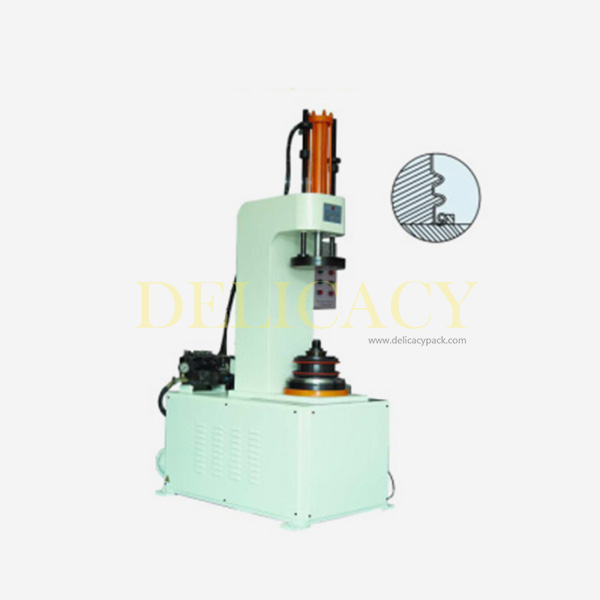Semi-automatic Hydraulic Curling And Beading Machine For Tin Can Making Line
This machine is the third process to produce pail bodies. It makes curling and beading operation with pre-curled pail bodies.
This machine is the third process to produce pail bodies. It makes curling and beading operation with pre-curled pail bodies.
Applicable can size range:10-25L pails
Max. pressure of oil pump:10Mpa
Applicable material thickness:0.3-0.5mm
Oil tank capacity:125L
Production capacity:15-20CPM
Motor power:7.5HP
Voltage:AC 380V 50HZ
Dimension:1200X700X2200mm
Weight:850kg
A semi-automatic hydraulic curling and beading machine for can-making is a specialized piece of equipment used in the manufacturing process of metal cans. The machine is designed to automate the process of curling and beading the edge of the metal sheet, which will eventually become the top or bottom of a can.
The machine is typically operated by a human worker who feeds the metal sheet into the machine and activates the hydraulic system to curl and bead the edge. The process is semi-automatic because the worker must manually feed the metal sheet into the machine, but the hydraulic system takes care of the rest of the process.
The benefits of using a hydraulic curling and beading machine include increased efficiency and consistency in the manufacturing process, reduced labor costs, and improved product quality. The use of hydraulic power ensures that the curl and bead are formed with precision and accuracy, which is essential for ensuring the cans are properly sealed and do not leak.
Overall, a semi-automatic hydraulic curling and beading machine is an essential piece of equipment for any can-making operation that requires high-quality, consistent production of metal cans.
Are there any safety precautions that need to be taken when operating the machine?
Yes, there are several safety precautions that need to be taken when operating a semi-automatic hydraulic machine for can-making, including:
1.Operators should receive proper training on the use and maintenance of the machine before operating it.
2.Operators should wear appropriate personal protective equipment (PPE), such as gloves, safety glasses, and ear protection, to protect themselves from hazards associated with the machine.
3.The machine should be properly grounded to prevent electrical hazards.
4.The machine should be regularly inspected and maintained to ensure it is in good working condition and all safety features are functioning properly.
5.The operator should never reach into the machine while it is in operation.
6.The operator should ensure that the metal sheet being fed into the machine is properly aligned and secured to prevent it from getting stuck or causing damage to the machine.
7.Emergency stop buttons should be easily accessible and clearly labeled.
Overall, it is important to follow all safety guidelines provided by the manufacturer and to use the machine in a safe and responsible manner to prevent accidents and injuries.



